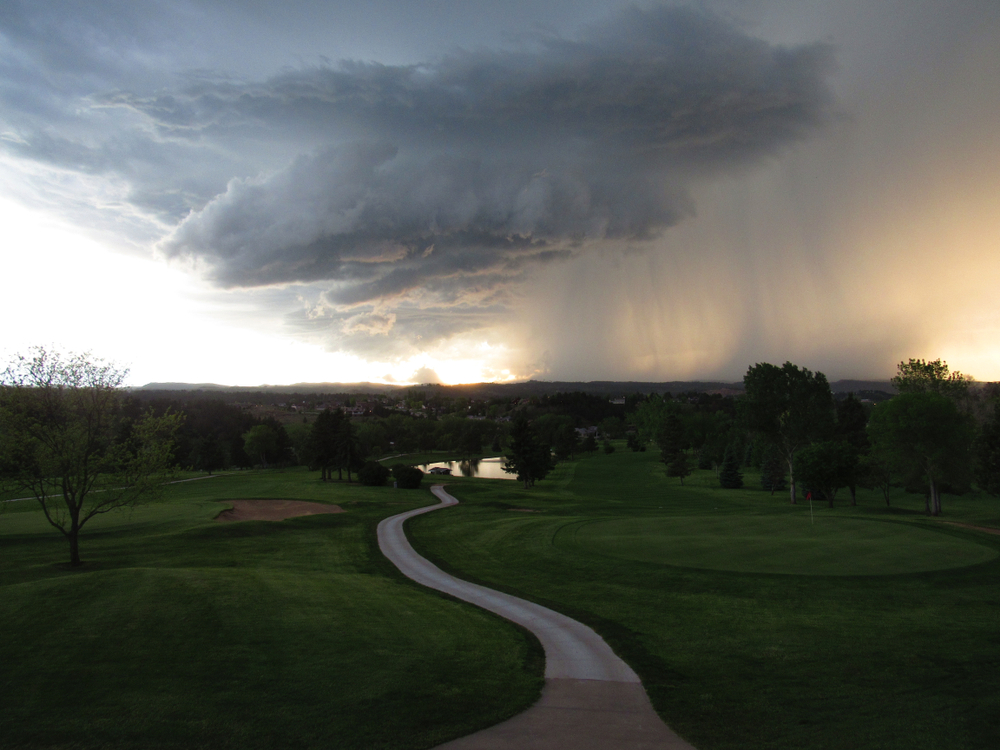For IJGA, a junior golf academy in Orlando, Florida, the weather is always a factor. The Southeastern tropical weather can be unpredictable and sometimes severe. In addition, serious golfers need to practice throughout every season, which sometimes means unfavorable weather conditions. So how can they be sure to stay safe while remaining dedicated to their craft?
Lightning Facts
Don’t mix lightning and golf. Seizing the opportunity to play a few more strokes or another hole can be fatal. Did you know that thunderstorms often hit outside of heavy rains and can occur 10 miles away from any rain? This and other lighting facts can be found below and are essential to any golfer.
For example, the air in lightning can be heated to 50,000 degrees Fahrenheit. The rapid heating of air is the cause of the shock waves that cause thunder. Lightning usually falls outside of heavy rain and may occur 10 miles away from any rainfall. Most lightning events occur in summer afternoons and evenings (between 2:00 and 6:00 pm) when people are trapped outdoors. The length of lightning from cloud to the ground can vary from 2 to 10 miles. With all of this considered, lightning is nothing to play around with. Even with unpredictable weather, there are ways to stay safe outdoors all year round.
Check the Forecast
Check the forecast and check it frequently. It seems simple, but when golfers are unaware of what the daily weather forecast says, they are no longer protected. Since we all always have mobile devices nearby, we must use them to our advantage. Anyone with a mobile phone can access some reliable weather application on them. Make sure the app can set alarms about lightning, severe thunderstorms, and even tornadoes. Most of these applications have a radius of 10 miles (plus, minus) from your current location, as indicated by the radar. This way, you can judge how close the next storm is, or more importantly, what the last lightning bolt was. Remember, rain won’t kill you, but lightning will. Use technology to tell you when it’s time to go home.
Contact Golf Venue
Contact your golf staff for policies regarding storms and their specific systems to protect golfers immediately. Before golfing in a storm, make sure you know where to seek refuge on the golf course should a storm hit. Know in advance where you are going because time is essential to find a safe place. Storms can roll in quickly, and it’s crucial to have a game plan already.
If there isn’t a building nearby, enclosed motor vehicles can provide shelter (golf carts are not safe vehicles) as long as customers do not touch the metal frame during electrical storms. If there is lightning nearby, there is no safe place outside. Partially enclosed shelters are not safe. If there is no safe shelter, stay away from taller objects (trees, lamp posts, flag poles), metal objects (fences or golf clubs), vertical pools, and fields. Distance yourself from any metal, including golf clubs.
Arm yourself with these tips, and remember, at the end of the day, playing golf is just that – playing a game. This is not something to risk your life over.
Golf Training From Golf Pros at IJGA
IJGA’s academy and camp experience offer a world-class training environment to help you elevate your golf game. We also hope you make excellent life choices along the way. Contact IJGA online or call toll-free 1-855-378-8177 for more details on our programs and what we offer.



